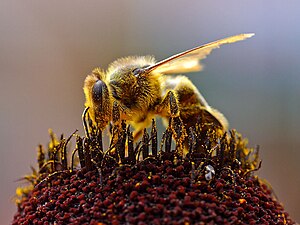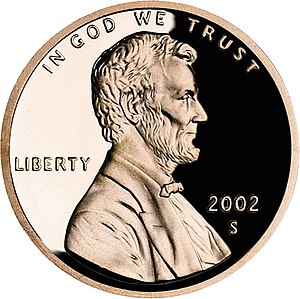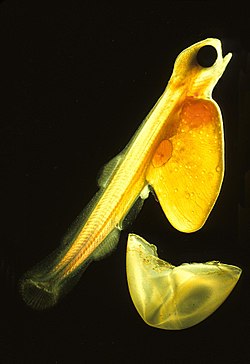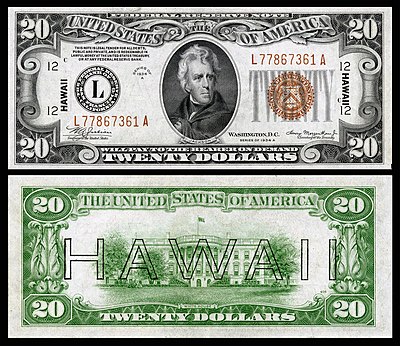Template:POTD/Day/testcases
| This is the template test cases page for the sandbox of Template:POTD/Day. to update the examples. If there are many examples of a complicated template, later ones may break due to limits in MediaWiki; see the HTML comment "NewPP limit report" in the rendered page. You can also use Special:ExpandTemplates to examine the results of template uses. You can test how this page looks in the different skins and parsers with these links: |
Today's POTD
[edit]{{POTD/Day|2025-01-21}}
{{POTD/Day}}
January 21

|
In the Loge, also known as At the Opera, is an 1878 Impressionist painting by the American artist Mary Cassatt. The oil-on-canvas work depicts a bourgeois woman in a box at an opera house looking through her opera glasses, while a man in the background looks at her from a different box. The woman's costume and fan identify her upper-class status. Art historians see the painting as a commentary on the role of gender, looking, and power in the social spaces of the 19th century. The painting is now at the Museum of Fine Arts, Boston, which also holds a preliminary drawing for the work. Painting credit: Mary Cassatt
Recently featured:
|
{{POTD/Day/sandbox}}
January 21

|
In the Loge, also known as At the Opera, is an 1878 Impressionist painting by the American artist Mary Cassatt. The oil-on-canvas work depicts a bourgeois woman in a box at an opera house looking through her opera glasses, while a man in the background looks at her from a different box. The woman's costume and fan identify her upper-class status. Art historians see the painting as a commentary on the role of gender, looking, and power in the social spaces of the 19th century. The painting is now at the Museum of Fine Arts, Boston, which also holds a preliminary drawing for the work. Painting credit: Mary Cassatt
Recently featured:
|
Non-existent POTD
[edit]{{POTD/Day|3000-01-01}}
{{POTD/Day}}
January 1
The featured picture for this day has not yet been chosen.
In general, pictures of the day are scheduled in order of promotion to featured status. See Wikipedia:Picture of the day/Guidelines for full guidelines.
{{POTD/Day/sandbox}}
January 1
The featured picture for this day has not yet been chosen.
In general, pictures of the day are scheduled in order of promotion to featured status. See Wikipedia:Picture of the day/Guidelines for full guidelines.
First POTD subpages
[edit]{{POTD/Day|2007-01-01}}
{{POTD/Day}}
January 1

|
A honey bee extracts nectar from a flower using its proboscis. Tiny hairs covering the bee's body maintain a slight electrostatic charge, causing pollen from the flower's anthers to stick to the bee's hairs, allowing for pollination when the bee moves on to another flower. Photo credit: Jon Sullivan
Recently featured:
|
{{POTD/Day/sandbox}}
January 1

|
A honey bee extracts nectar from a flower using its proboscis. Tiny hairs covering the bee's body maintain a slight electrostatic charge, causing pollen from the flower's anthers to stick to the bee's hairs, allowing for pollination when the bee moves on to another flower. Photo credit: Jon Sullivan
Recently featured:
|
{{POTD/Day|2007-01-02}}
{{POTD/Day}}
January 2

|
The obverse of a proof-quality Lincoln cent with cameo effect. This has been the United States one-cent coin since 1909. Among United States coins, there are more one-cent coins produced than any other denomination. The reverse has featured the Lincoln Memorial since 1959. When the Lincoln cent made its initial appearance, it marked a radical departure from the accepted styling of United States coins. A strong feeling had prevailed against using portraits, but public sentiment stemming from the 100th anniversary celebration of Abraham Lincoln's birth proved stronger than the long-standing prejudice. Photo credit: U.S. Mint
Recently featured:
|
{{POTD/Day/sandbox}}
January 2

|
The obverse of a proof-quality Lincoln cent with cameo effect. This has been the United States one-cent coin since 1909. Among United States coins, there are more one-cent coins produced than any other denomination. The reverse has featured the Lincoln Memorial since 1959. When the Lincoln cent made its initial appearance, it marked a radical departure from the accepted styling of United States coins. A strong feeling had prevailed against using portraits, but public sentiment stemming from the 100th anniversary celebration of Abraham Lincoln's birth proved stronger than the long-standing prejudice. Photo credit: U.S. Mint
Recently featured:
|
{{POTD/Day|2007-01-03}}
{{POTD/Day}}
January 3

|
The Clock Tower is a turret clock structure at the north-eastern end of the Houses of Parliament building in Westminster, London. It is colloquially and popularly known as Big Ben; however this name actually belongs to the clock's main bell. It was raised as a part of Charles Barry's design of a new palace, after the old one was destroyed by fire. The tower is designed in the Victorian Gothic style, and is 96.3 metres (316 feet) high. Photo credit: Diliff
Recently featured:
|
{{POTD/Day/sandbox}}
January 3

|
The Clock Tower is a turret clock structure at the north-eastern end of the Houses of Parliament building in Westminster, London. It is colloquially and popularly known as Big Ben; however this name actually belongs to the clock's main bell. It was raised as a part of Charles Barry's design of a new palace, after the old one was destroyed by fire. The tower is designed in the Victorian Gothic style, and is 96.3 metres (316 feet) high. Photo credit: Diliff
Recently featured:
|
{{POTD/Day|2007-01-04}}
{{POTD/Day}}
January 4

|
An Atlantic salmon (Salmo salar) egg hatching. The Alevin (larva) has grown around the remains of the yolk sac - visible are the arteries spinning around the yolk and little oildrops, also the gut, the spine, the main caudal blood vessel, the bladder and the arcs of the gills. In about 24 hours it will be a fry without yolk sac. Photo credit: Uwe Kils
Recently featured:
|
{{POTD/Day/sandbox}}
January 4

|
An Atlantic salmon (Salmo salar) egg hatching. The Alevin (larva) has grown around the remains of the yolk sac - visible are the arteries spinning around the yolk and little oildrops, also the gut, the spine, the main caudal blood vessel, the bladder and the arcs of the gills. In about 24 hours it will be a fry without yolk sac. Photo credit: Uwe Kils
Recently featured:
|
Random selection
[edit]{{POTD/Day|2014-06-25}}
{{POTD/Day}}
June 25
Subpage 1

|
The Hawaii overprint notes, an emergency issue of U.S. currency overprinted with the word Hawaii, became the only bills allowed to be used there following the attack on Pearl Harbor. Any money captured by the Japanese if they invaded Hawaii could then be easily distinguished. The bills were introduced on June 25, 1942, and withdrawn effective April 1946; many were destroyed. Shown here is a $1 Silver Certificate, of which 35,052,000 were printed. This bill is scanned from the collections of the National Numismatic Collection at the Smithsonian Institution.
Banknote: Bureau of Engraving and Printing (image courtesy of the Smithsonian Institution)
Recently featured:
|
Subpage 2

|
The Hawaii overprint notes, an emergency issue of U.S. currency overprinted with the word Hawaii, became the only bills allowed to be used there following the attack on Pearl Harbor. Any money captured by the Japanese if they invaded Hawaii could then be easily distinguished. The bills were introduced on June 25, 1942, and withdrawn effective April 1946; many were destroyed. Shown here is a $5 Federal Reserve Note, of which 9,416,000 were printed. This bill is scanned from the collections of the National Numismatic Collection at the Smithsonian Institution.
Banknote: Bureau of Engraving and Printing (image courtesy of the Smithsonian Institution)
Recently featured:
|
Subpage 3

|
The Hawaii overprint notes, an emergency issue of U.S. currency overprinted with the word Hawaii, became the only bills allowed to be used there following the attack on Pearl Harbor. Any money captured by the Japanese if they invaded Hawaii could then be easily distinguished. The bills were introduced on June 25, 1942, and withdrawn effective April 1946; many were destroyed. Shown here is a $10 Federal Reserve Note, of which 10,424,000 were printed. This bill is scanned from the collections of the National Numismatic Collection at the Smithsonian Institution.
Banknote: Bureau of Engraving and Printing (image courtesy of the Smithsonian Institution)
Recently featured:
|
Subpage 4

|
The Hawaii overprint notes, an emergency issue of U.S. currency overprinted with the word Hawaii, became the only bills allowed to be used there following the attack on Pearl Harbor. Any money captured by the Japanese if they invaded Hawaii could then be easily distinguished. The bills were introduced on June 25, 1942, and withdrawn effective April 1946; many were destroyed. Shown here is a $20 Federal Reserve Note, of which 11,246,000 were printed. This bill is scanned from the collections of the National Numismatic Collection at the Smithsonian Institution.
Banknote: Bureau of Engraving and Printing (image courtesy of the Smithsonian Institution)
Recently featured:
|
{{POTD/Day/sandbox}}
June 25
Subpage 1

|
The Hawaii overprint notes, an emergency issue of U.S. currency overprinted with the word Hawaii, became the only bills allowed to be used there following the attack on Pearl Harbor. Any money captured by the Japanese if they invaded Hawaii could then be easily distinguished. The bills were introduced on June 25, 1942, and withdrawn effective April 1946; many were destroyed. Shown here is a $1 Silver Certificate, of which 35,052,000 were printed. This bill is scanned from the collections of the National Numismatic Collection at the Smithsonian Institution.
Banknote: Bureau of Engraving and Printing (image courtesy of the Smithsonian Institution)
Recently featured:
|
Subpage 2

|
The Hawaii overprint notes, an emergency issue of U.S. currency overprinted with the word Hawaii, became the only bills allowed to be used there following the attack on Pearl Harbor. Any money captured by the Japanese if they invaded Hawaii could then be easily distinguished. The bills were introduced on June 25, 1942, and withdrawn effective April 1946; many were destroyed. Shown here is a $5 Federal Reserve Note, of which 9,416,000 were printed. This bill is scanned from the collections of the National Numismatic Collection at the Smithsonian Institution.
Banknote: Bureau of Engraving and Printing (image courtesy of the Smithsonian Institution)
Recently featured:
|
Subpage 3

|
The Hawaii overprint notes, an emergency issue of U.S. currency overprinted with the word Hawaii, became the only bills allowed to be used there following the attack on Pearl Harbor. Any money captured by the Japanese if they invaded Hawaii could then be easily distinguished. The bills were introduced on June 25, 1942, and withdrawn effective April 1946; many were destroyed. Shown here is a $10 Federal Reserve Note, of which 10,424,000 were printed. This bill is scanned from the collections of the National Numismatic Collection at the Smithsonian Institution.
Banknote: Bureau of Engraving and Printing (image courtesy of the Smithsonian Institution)
Recently featured:
|
Subpage 4

|
The Hawaii overprint notes, an emergency issue of U.S. currency overprinted with the word Hawaii, became the only bills allowed to be used there following the attack on Pearl Harbor. Any money captured by the Japanese if they invaded Hawaii could then be easily distinguished. The bills were introduced on June 25, 1942, and withdrawn effective April 1946; many were destroyed. Shown here is a $20 Federal Reserve Note, of which 11,246,000 were printed. This bill is scanned from the collections of the National Numismatic Collection at the Smithsonian Institution.
Banknote: Bureau of Engraving and Printing (image courtesy of the Smithsonian Institution)
Recently featured:
|
{{POTD/Day|2014-06-26}}
{{POTD/Day}}
June 26

|
Dioctria atricapilla is a species of robber fly in the subfamily Dasypogoninae. Measuring 9–12 mm (0.35–0.47 in) in length, with a 7–9 mm (0.28–0.35 in) wingspan, it feeds mainly on smaller flies and predatory hymenopterans. Photo: Richard Bartz
Recently featured:
|
{{POTD/Day/sandbox}}
June 26

|
Dioctria atricapilla is a species of robber fly in the subfamily Dasypogoninae. Measuring 9–12 mm (0.35–0.47 in) in length, with a 7–9 mm (0.28–0.35 in) wingspan, it feeds mainly on smaller flies and predatory hymenopterans. Photo: Richard Bartz
Recently featured:
|
